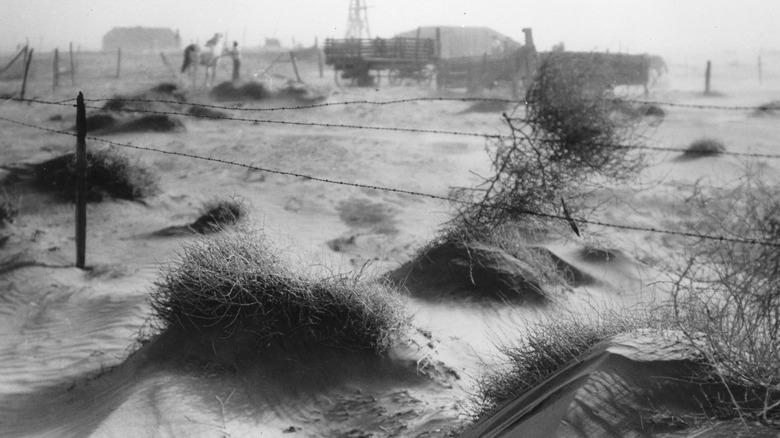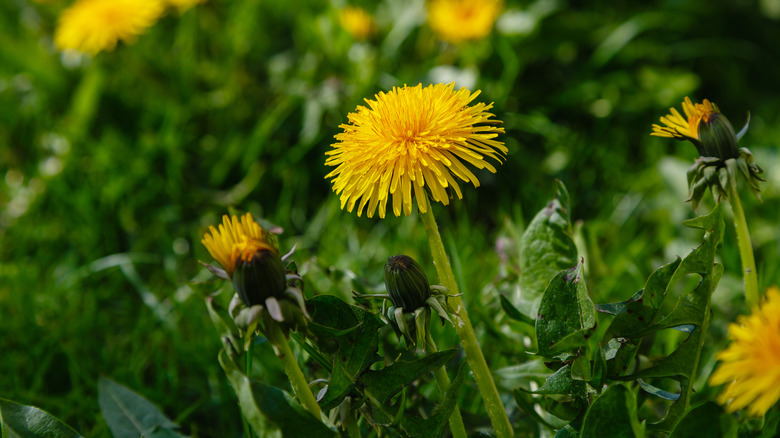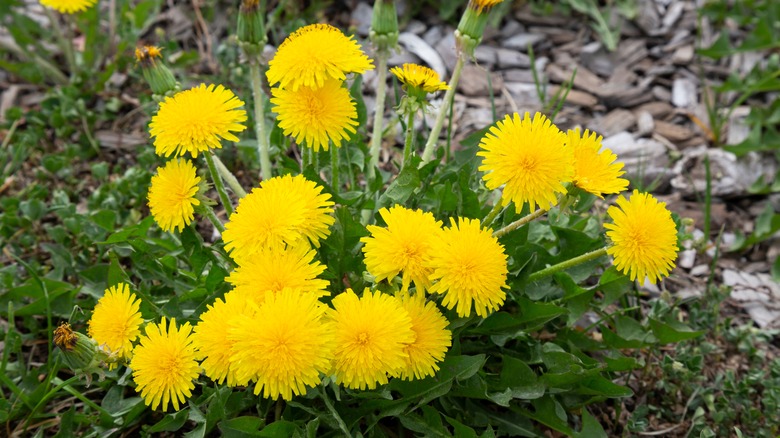People Resorted To Eating This Everyday Weed During The Dust Bowl
Humans first figured out agriculture — planting and growing crops, as well as breeding animals for food in captivity — about 10,000 years ago, according to National Geographic. Prior to that, we stayed alive through hunting, gathering, and foraging.
In various areas of the globe, humans still forage. For some, it's a necessity of daily life, due, for example, to extreme poverty or lack of access to other foodstuffs. For others, it's simply a pastime — there's an entire YouTube subgenre dedicated to foraging.
A few decades ago, an untold number of Americans found themselves having to forage to survive. A crushing drought hit the Midwest in 1930 and continued for 10 years (per History), part of the tragedy of the Great Depression. The resulting Dust Bowl put millions of Americans across the Great Plains in the position of having to eat whatever they could find simply to survive. And one of the foodstuffs that put calories into the bellies of starving Americans was a humble weed commonly found today on lawns.
Dandelion salad
The humble dandelion — Taraxacum officinale — grows in every one of the 48 contiguous states in the U.S., according to EDD Maps, including Oklahoma, Texas and Arkansas, three of the states where the Dust Bowl hit the hardest. When push came to shove, residents in those states and others were forced to eat them, as noted in the book, "The Dust Bowl."
Before you conclude that people choked down dandelions while suppressing their gag reflexes, note that Michigan State University says that just about every part of the dandelion plant is edible; with the right preparation (and thorough cleaning beforehand) it can be downright delicious. The university suggests using them in pancakes or fritters, or serving them as a salad, perhaps topped with olive oil, lemon juice, and/or salt. In 2018, a YouTuber recreated a dandelion salad recipe using the leaves, and reported that it was "great," describing it as "fresh, crisp ... nice bitterness," and noted that the flavor profile reminded her of arugula.
Other dandelion recipes
Cleaning and cutting dandelion leaves and serving them on a plate, possibly with some oil, acid, and/or salt, is the simplest and most direct way to get them into your stomach. But as it turns out, there are multiple dandelion preparations. One of the biggest uses of the humble weed is dandelion wine, which has been around for centuries, according to Common Sense Home. Other uses for dandelions, explored in greater depth on YouTube, include using them to create a substitute coffee, and frying them.
Difficult economic circumstances throughout the country drove (or inspired) people to make do, especially in the kitchen. Inexpensive foods that still packed a nutritional punch (as well as being filling) included potatoes, rice, and beans (per The Spruce Eats).
It bears noting that anything you find on or growing in the ground must be washed thoroughly before preparing and/or eating it. And of course, it goes without saying that you should be absolutely sure of what you're eating, lest you eat some plant that could potentially sicken or kill you.


